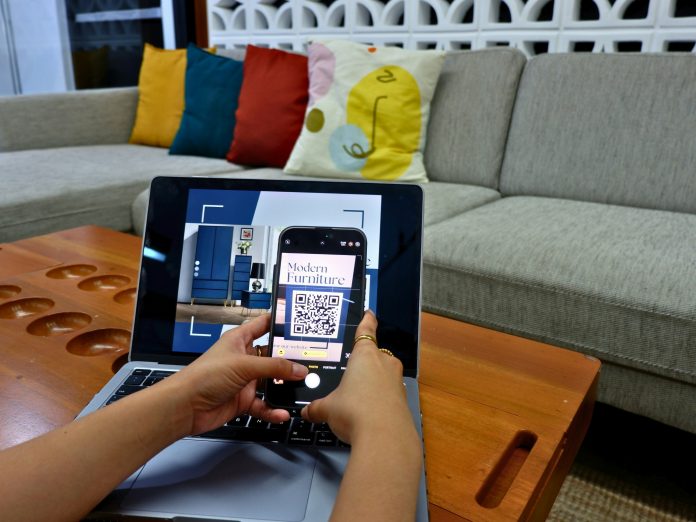Traditionally, manufacturers have relied on dedicated handheld barcode scanners for inventory management, asset tracking, and supply chain operations. However, the advent of smartphone technology is transforming this practice. Modern smartphones can now accurately scan barcodes, QR codes, and other machine-readable symbols, tasks previously managed by specialised hardware. This shift is primarily driven by the need to optimise costs and operational efficiency, leveraging the ubiquity and versatility of mobile devices.
The integration of mobile applications and software development kits (SDKs) for barcode scanning has simplified the process.
These solutions offer advanced features, such as augmented reality (AR) overlays, real-time data processing, and seamless integration with enterprise resource planning (ERP) systems, enhancing productivity beyond what traditional handhelds can offer.
Key drivers of adoption
Several factors drive the adoption of smartphone scanners in manufacturing. Cost savings are significant, as smartphones are far cheaper than dedicated scanners.
Ease of use is another crucial factor; employees are generally familiar with smartphones, which reduces training time and increases productivity.
Modern smartphones also come equipped with features like AR overlays, real-time data processing, and seamless ERP integration, which further enhance their appeal.
Lower acquisition cost
One of the main advantages of smartphone scanners is their lower acquisition cost. Companies can potentially eliminate this cost entirely by implementing a Bring Your Own Device (BYOD) policy, allowing employees to use their own smartphones. Even when new devices are purchased, the savings are considerable.
Industrial-grade scanners can cost over $800 each, while mid-range smartphones can be acquired for $300 or less. These savings accumulate quickly across a large workforce. The competitive smartphone market also helps keep prices low.
Reduced maintenance cost
Smartphone scanners also have lower maintenance costs compared to traditional scanners. The extensive number of smartphone vendors increases competition and makes repair services more affordable.
Unlike dedicated scanners, which often require costly shipping to specialised repair centres, smartphones can be repaired locally at a lower cost.
The modular nature of many smartphones allows for individual component replacements, further reducing maintenance costs.
For example, replacing a battery or screen is relatively simple, whereas a single component failure in a dedicated scanner may necessitate a complete replacement.
Scanning for all improves productivity
Smartphone scanners boost productivity by making scanning capabilities more accessible to employees. Traditional scanners are expensive, so companies typically buy a limited number for shared use.
This leads to time wasted locating these devices. With smartphone scanners, each employee can have their own device, eliminating bottlenecks and streamlining workflows.
The intuitive interfaces of smartphones allow employees to quickly learn how to use the devices effectively as scanners. This familiarity boosts confidence and reduces training time, enhancing overall productivity.
Advanced features of smartphone scanners
Smartphone scanners offer various advanced features that enhance user experience and productivity.
Augmented reality overlays provide real-time visual guidance, step-by-step instructions, and virtual annotations, improving accuracy and speed.
Frequent software updates ensure the latest features, security patches, and optimal performance. The familiar interfaces of smartphones also reduce the learning curve, speeding up adoption and increasing efficiency.
Potential challenges and solutions
Despite their advantages, smartphone scanners pose some challenges in manufacturing environments. Durability can be addressed with rugged cases and other protective measures.
Battery life can be managed with charging stations, spare batteries, and other power management strategies to ensure continuous operation.
Security concerns can be mitigated with robust encryption and access controls to safeguard against cyber threats. Implementing BYOD policies with clear guidelines helps employees effectively separate personal and work-related data, maintaining privacy and security.
Long-term value
Smartphone scanners provide long-term operational improvements and cost reductions. Equipping more personnel with affordable scanning capabilities allows manufacturers to streamline more processes, reduce bottlenecks, and enhance efficiency.
Familiar interfaces reduce training needs, while advanced features increase productivity.
Cost savings from reduced capital expenditures and maintenance expenses can be reallocated to other areas, fostering innovation and growth.
The flexibility and scalability of smartphone scanners allow manufacturers to adapt to evolving needs and future-proof their operations.
The future of scanning technology
The future of scanning technology in manufacturing looks promising, with advancements in AI, AR, and IoT. AI-powered image recognition and object detection can streamline tasks like inventory management and quality control.
Augmented and mixed reality technologies provide real-time guidance, minimising errors and enhancing productivity. The expansion of IoT and 5G networks enables more advanced scanning applications and faster data exchange, unlocking further operational efficiencies.
By adopting smartphone-based solutions and other cutting-edge technologies, manufacturers can achieve new levels of efficiency, productivity, and cost savings, positioning themselves for long-term success iCutting costs with smartphone barcode scannersn an increasingly connected and data-driven world.
Read the full blog from Scanbot SDK here.
Keep up with all the latest FinTech news here.
Copyright © 2024 FinTech Global











